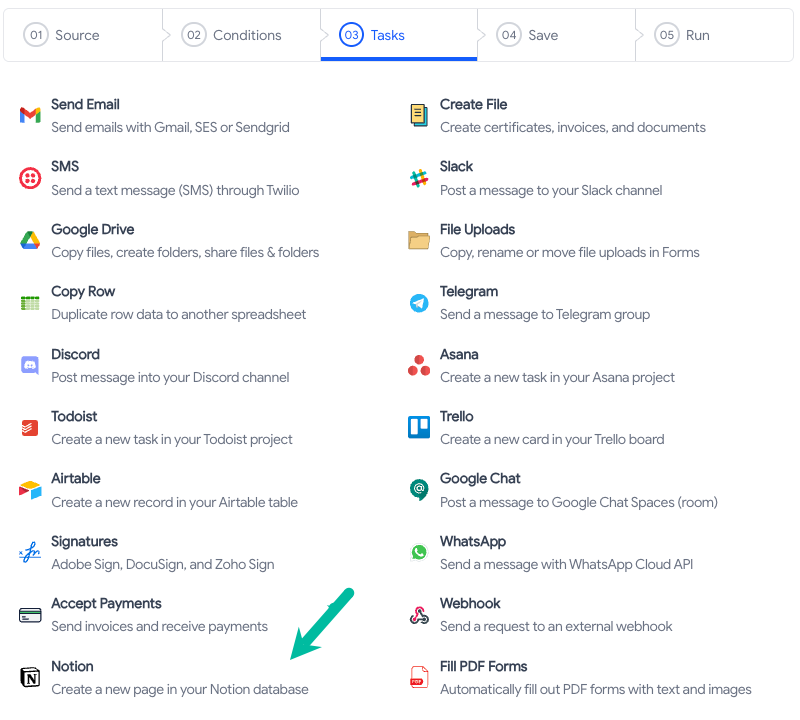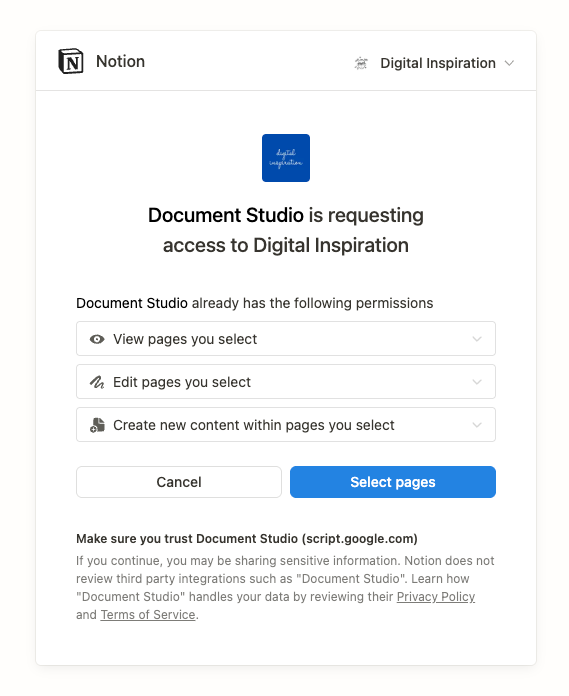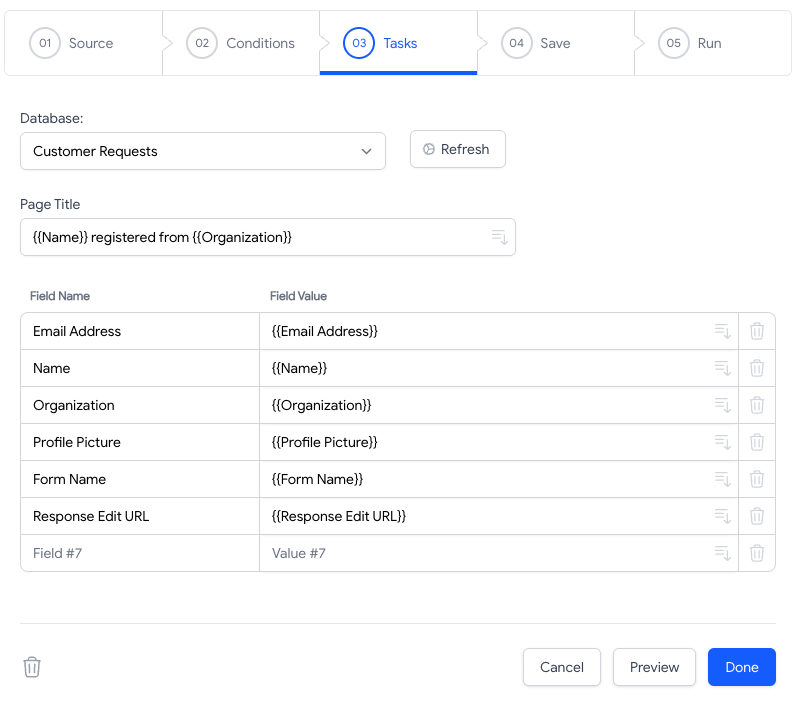Create new pages in Notion from Google Form responses
With Document Studio for Google Forms, you can create a new page in a Notion database whenever a new response is submitted to your Google Form. This is useful for creating a centralized repository of information, such as customer feedback or support requests, in your Notion workspace.
For this example, we have a Google Form that collects registration information for an event. We will create a new page in a Notion database for every new registration form submission.
Connect Notion with Google Forms
Install the Document Studio add-on, open your Google Form, and launch the add-on. Create a new workflow, provide a descriptive name for your Google Form to Notion workflow, and then click on Continue to move to the conditions page. The workflow, by default, will run for all new form responses including edits made to existing form submissions.
Next, choose Notion from the list of available tasks since we are creating new pages in Notion from Google Form responses.

Authorize Notion
On the Notion task page, click on the Link your Notion account button and follow the instructions to let Google Forms connect to your Notion account.
Select one or more databases in Notion that you would like to link to the current Google Form and click on the Allow access button. Document Studio will only use your Notion account to create new pages in the selected databases from Google Form responses. It will not read, edit, or delete any existing data in your Notion workspace.

Notion Page Title
Now that your Notion account is linked, you can switch to the Document Studio app inside Google Form and you'll see a dropdown with a list of all Notion databases that you have granted access to in the previous step.
Select the database where you want to create new pages on new form submissions. Next, provide the page title for your new Notion page. You can use dynamic markers to specify values from the Google Form responses.
For instance, you could say {{Name}} registered from {{City}} where Name and City are the questions in your Google Form. This will create a new page in Notion with the title John Doe registered from New York if the respondent's name is John Doe and the city is New York.
Google Forms to Notion mapping
Next, you need to map the questions in your Google Form to the properties in your Notion database.
For instance, if you have a question titled Your full name in your Google Form asking for the respondent's name, you can map this to a Full Name property in your Notion database. The field name will be Full Name and the field value will be {{Your full name}}. These markers will be replaced with actual answers entered by the respondent in the Google Form.

If you look at the screenshot above, you can see that the Name question in the Google Form is mapped to the Name property in the Notion database. You may change the field name in the Notion database to something more descriptive like Full Name or Customer Name.
We've also added Notion properties (fields) for Form Name and Response Edit URL as these will help you quickly identify the source of the new page in Notion.
The text fields also support Scriptlets to add conditional text based on the user's answers in the Google Form.
Enable the Notion workflow
Click on Continue to proceed to the triggers screen. Check the Run on form submit option so that every time a new form response is submitted, the workflow will be triggered and a new page will be added to your Notion database.
Now, open your Google Form and submit a sample response to test the workflow.
The workflow will also appear in the workflow dashboard where you can edit, delete, or manually run the workflow.